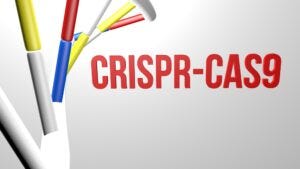
The UK has approved Casgevy (exagamglogene autotemcel [exa-cel]), Vertex’s CRISPR/Cas9 gene-edited therapy for the treatment of sickle cell disease (SCD) and transfusion-dependent beta thalassemia (TDT).
The conditional marketing authorization granted by the UK’s Medicines and Healthcare products Regulatory Agency (MHRA) makes Casgevy the world’s first CRISPR-based gene-edited therapy.
As such, Vertex CEO Reshma Kewalramani described this as “a historic day in science and medicine,” while Samarth Kulkarni, CEO of CRISPR Therapeutics, said he hoped this would be the “first of many applications of this Nobel Prize winning technology to benefit eligible patients with serious diseases.”

DepositPhotos/Premium_shots
Vertex and CRISPR Therapeutics have collaborated for a number of years, but first partnered on exa-cel in April 2021, with Vertex paying CRISPR $900 million upfront for the commercialization rights.
Exa-cel is an autologous, ex vivo CRISPR/Cas9 gene-edited therapy in which a patient’s hematopoietic stem cells are edited to produce high levels of fetal hemoglobin (HbF; hemoglobin F) in red blood cells. HbF is a form of the oxygen-carrying hemoglobin that is naturally present at birth, which then switches to the adult form of hemoglobin.
Speaking ahead of the approval on Vertex’s recent Q3 financial call, COO Stuart Arbuckle explained the three phases of the patient’s journey further:
“First, pretreatment. Initially, when a potential exa-cel patient and their hematologist decide the therapy is right for them, the patient is then referred to a transplant physician at an ATC. Once that referral is scheduled, the patient then undergoes a full workup to determine whether they are fit for treatment with exa-cel,” he said.
“Second, cell collection and manufacturing. This phase involves mobilization to move the blood stem cells from the bone marrow into the peripheral blood, where the cells can be collected through apheresis. The patient’s cells are then sent to our manufacturing facilities, where they are edited and then tested for quality control. Cell collection takes longer for sickle cell disease patients given the need for two months of red blood cell transfusions prior to mobilization and on average two rounds of mobilization and apheresis. In contrast TDT patients do not require premobilization transfusions and typically only require one round of mobilization and apheresis.”
The final phase, he continued, is treatment. “Once the edited cells are ready, the patient starts the treatment phase, which includes myeloablative conditioning, infusion of the edited cells, at which point we will recognize revenue for the therapy, and then waiting for engraftment and post-infusion care. A critical timing factor in this phase is the patient’s preferred timing for treatment, as they must choose a time that works best for their lives, given that this step involves an approximate one-month hospital stay.”
Exa-cel is under review by the European Medicines Agency, the Saudi Food and Drug Authority, and the US Food and Drug Administration (FDA). The latter has given a Prescription Drug User Fee Act (PDUFA) target action date of December 8 2023 for the sickle cell application and March 30 2024 for the beta thalassemia application.
About the Author
You May Also Like

schedl_b_and_w.jpg?width=100&auto=webp&quality=80&disable=upscale)
schedl_b_and_w.jpg?width=400&auto=webp&quality=80&disable=upscale)


